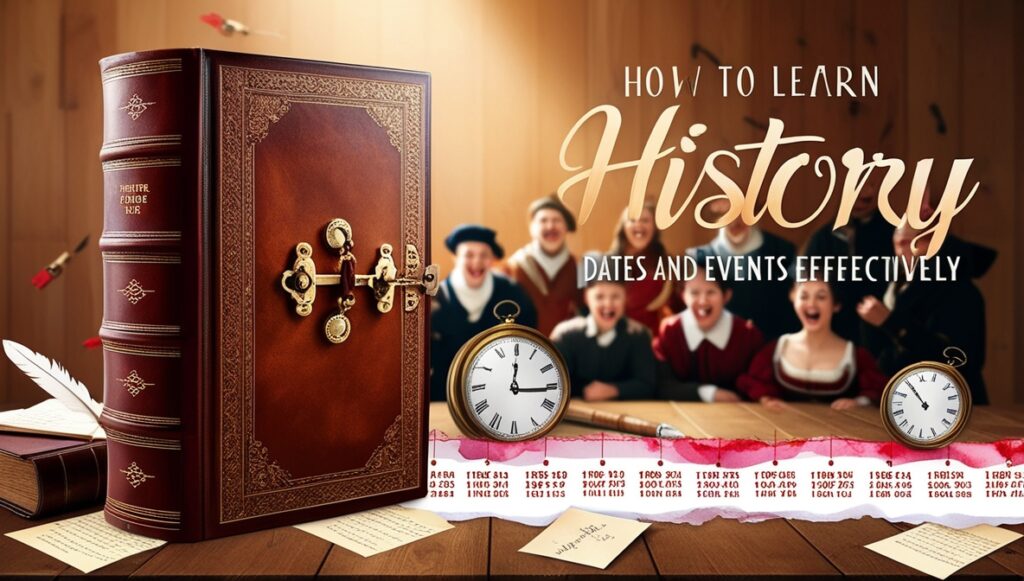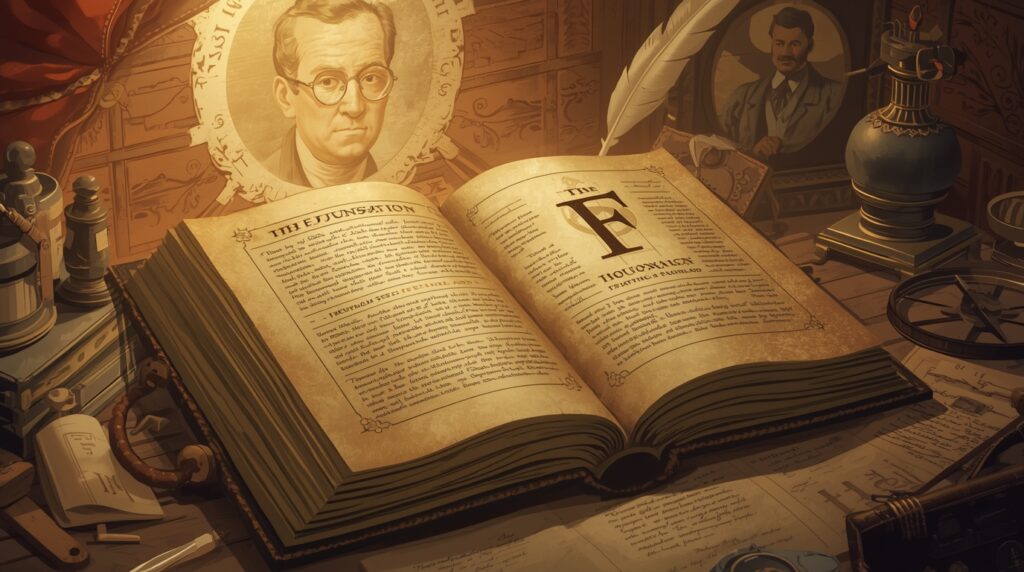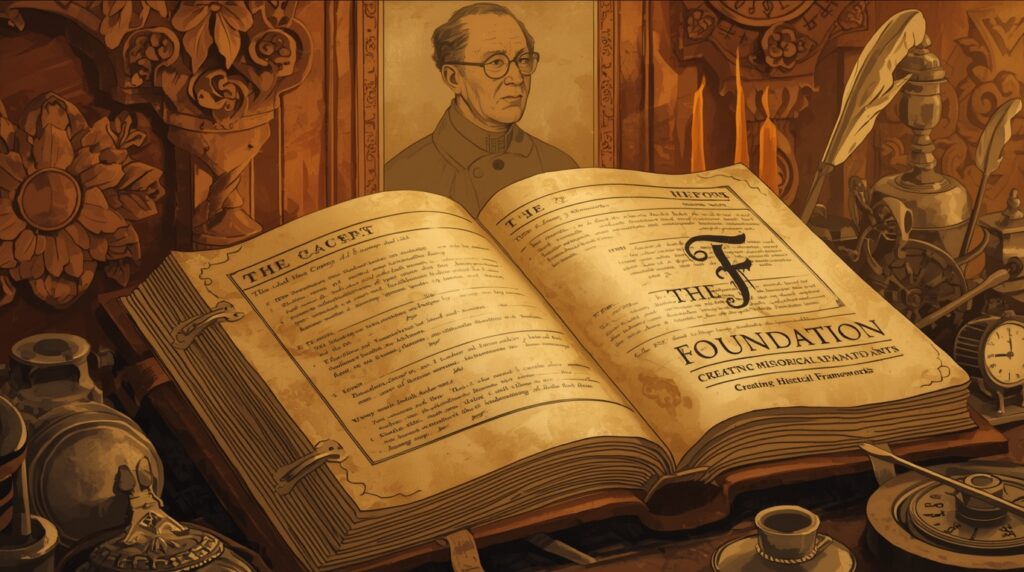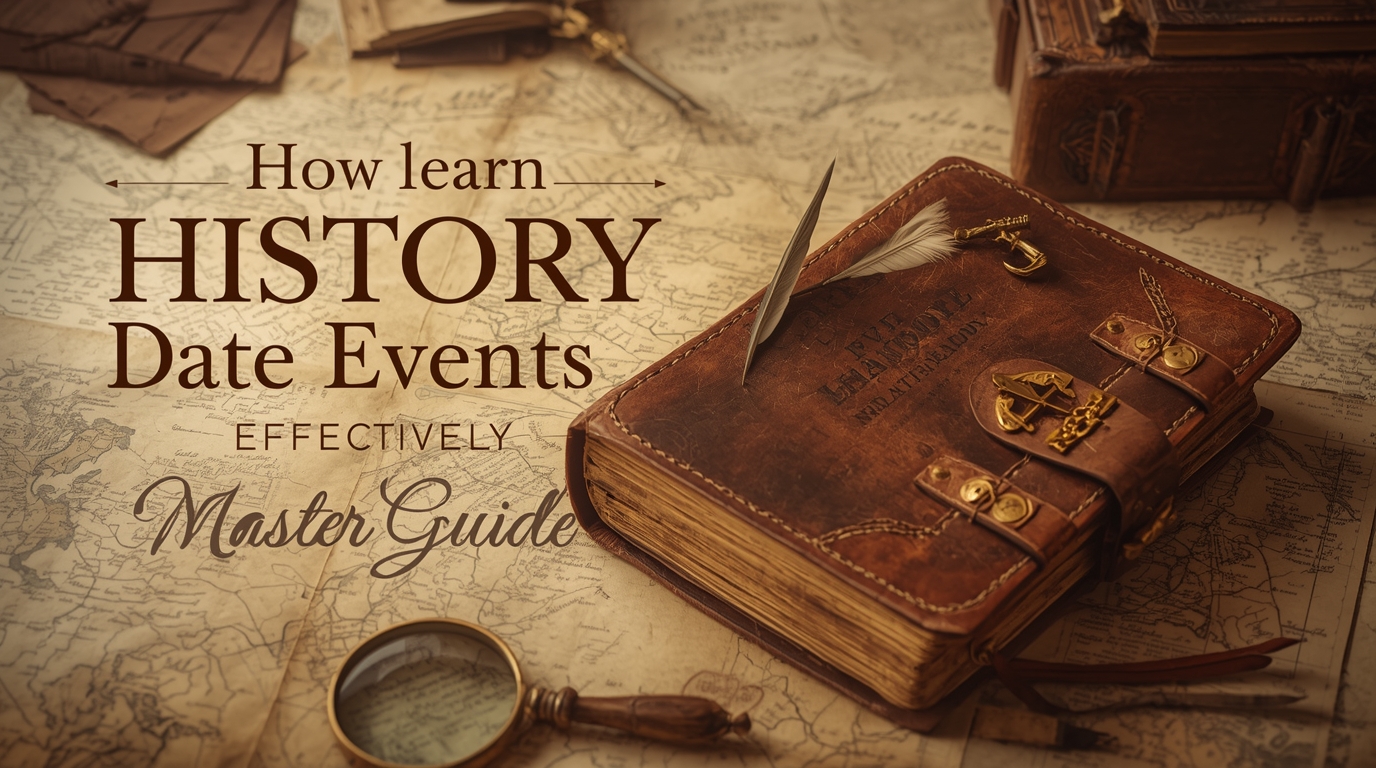Learning history dates and events can feel like an impossible task. With thousands of years of human civilization, countless wars, revolutions, discoveries, and cultural shifts, the sheer volume of information can be overwhelming. Many students resort to rote memorization, cramming dates and facts only to forget them shortly after exams. But there’s a better way.

Effective history learning isn’t about memorizing isolated facts—it’s about understanding patterns, connections, and narratives that make dates meaningful and memorable. This comprehensive guide will transform your approach to learning historical dates and events, helping you retain information longer and develop a deeper understanding of how history unfolds.
Understanding Why Dates Matter in Historical Context
Before diving into memorization techniques, it’s crucial to understand why dates matter in historical study. Dates aren’t arbitrary numbers—they’re anchors that help us understand causation, sequence, and context. The American Civil War didn’t happen in isolation; it occurred in 1861-1865 because of decades of mounting tensions over slavery, economic differences, and political conflicts.
When you understand that the Industrial Revolution began in Britain around 1760, you can better comprehend why Britain became a global superpower, why social conditions changed dramatically, and how this transformation influenced political revolutions across Europe and America. Dates provide the framework for understanding how events influence each other across time.
Think of historical dates as coordinates on a map of time. Just as geographic coordinates help you navigate physical space, chronological coordinates help you navigate the complex landscape of human history. Without this temporal framework, historical events become disconnected facts rather than parts of a coherent story.
The Foundation: Creating Historical Frameworks
The most effective way to learn historical dates is to build frameworks that organize information logically. Instead of memorizing isolated dates, create chronological scaffolding that shows how events connect.

Era-Based Organization: Divide history into major eras or periods. For Western history, you might use frameworks like Ancient (3000 BCE – 500 CE), Medieval (500-1500), Early Modern (1500-1800), and Modern (1800-present). Within each era, identify the major themes, turning points, and characteristic features.
Thematic Timelines: Create separate timelines for different themes—political history, technological innovation, cultural developments, religious changes, or economic transformations. This approach helps you see how different aspects of human experience evolve simultaneously and influence each other.
Geographic Focus: Organize your learning by region or civilization. Understanding the chronology of Chinese dynastic history, the rise and fall of Mediterranean civilizations, or the development of African kingdoms provides geographic anchors for temporal information.
Cause-and-Effect Chains: Map out how events lead to other events. The assassination of Archduke Franz Ferdinand (1914) led to World War I, which created conditions for the Russian Revolution (1917), which influenced the rise of fascism, leading to World War II (1939-1945). These causal chains make individual dates more meaningful and memorable.
Memory Techniques for Historical Information
Once you’ve established frameworks, employ specific memory techniques to retain dates and events more effectively.
The Memory Palace Method: This ancient technique involves associating information with familiar spatial locations. Choose a familiar place—your home, school, or neighborhood—and mentally “place” historical events in specific locations. Walk through your memory palace regularly, visiting each location and recalling the associated historical information.
For example, you might place the French Revolution (1789) at your front door, Napoleon’s rise (1804) in your living room, and the Congress of Vienna (1815) in your kitchen. The spatial relationships help reinforce temporal relationships.
Acronyms and Mnemonics: Create memorable phrases or acronyms for sequences of events. For remembering the order of Roman emperors, the causes of World War I, or the sequence of American presidents, develop memorable phrases where each word’s first letter corresponds to what you’re trying to remember.
Number Association Systems: Develop personal associations for common historical numbers. If you were born in 1995, you might remember that the Treaty of Versailles was signed in 1919—exactly 76 years before your birth. Create these personal connections to make dates more meaningful.
Rhymes and Songs: Set historical information to familiar melodies or create rhyming verses. The musical and rhythmic elements make information easier to remember. Many people still remember historical facts from educational songs they learned in elementary school.
The Power of Storytelling and Narrative
Humans are natural storytellers, and our brains are wired to remember information presented in narrative form. Instead of memorizing isolated dates, weave historical events into compelling stories.
Character-Driven Narratives: Focus on key historical figures and their life stories. Understanding that Julius Caesar was born in 100 BCE, became consul in 59 BCE, conquered Gaul from 58-50 BCE, crossed the Rubicon in 49 BCE, and was assassinated in 44 BCE creates a narrative arc that makes each date meaningful within the story of his life.
Conflict and Resolution Patterns: Frame historical events as stories with conflict and resolution. The American Revolution becomes a story of colonial grievances, failed reconciliation attempts, armed resistance, and ultimate independence. Each date represents a chapter in this larger narrative.
Cause and Consequence Stories: Tell stories that emphasize how earlier events set the stage for later developments. The story of how the Black Death (1347-1351) led to labor shortages, social upheaval, and ultimately contributed to the end of feudalism creates a causal narrative that makes the plague’s timing significant.
Parallel Stories: Compare simultaneous developments in different regions. While Europe was experiencing the Renaissance (1400-1600), what was happening in Ming China, the Ottoman Empire, or the Aztec civilization? These parallel narratives help you understand the broader context of historical development.
Visual Learning Strategies
Visual learning techniques can dramatically improve your retention of historical dates and events.
Timeline Creation: Draw detailed timelines by hand rather than using digital tools. The physical act of writing helps with memory retention. Use colors, symbols, and illustrations to make your timelines visually engaging. Create both macro timelines covering centuries and micro timelines focusing on specific decades or events.
Historical Maps: Study maps showing political boundaries, trade routes, and cultural regions at different time periods. Understanding that the Holy Roman Empire controlled much of central Europe in 1000 CE helps you understand why certain events occurred where and when they did.
Infographic Development: Create visual representations of complex historical information. Show the rise and fall of civilizations, the spread of religions, the development of technologies, or the causes and effects of major wars through diagrams, charts, and illustrations.
Historical Flowcharts: Create flowcharts showing how events lead to other events. Visual representation of causal relationships helps you understand why events occurred when they did and how they influenced subsequent developments.
Active Engagement Techniques
Passive reading rarely leads to long-term retention. Engage actively with historical material through various techniques.
Historical Role-Playing: Imagine yourself as a historical figure making decisions based on the information available at the time. What would you have done as a Roman senator during the crisis of the Republic? How would you have advised a medieval king during a succession crisis? This imaginative engagement helps you understand the context that shaped historical events.
Debate and Discussion: Argue different sides of historical controversies. Was the American Civil War primarily about slavery or states’ rights? Could World War I have been prevented? These debates require you to understand multiple perspectives and the timing of key events.
Historical Writing: Write diary entries from the perspective of historical figures, create newspaper articles reporting on historical events, or compose letters between historical characters. This creative writing requires deep understanding of historical context and chronology.
Teaching Others: Explain historical events and their significance to friends, family members, or study partners. Teaching forces you to organize information clearly and identify the most important dates and connections.
Technology-Enhanced Learning
Leverage technology to make learning historical dates more engaging and effective.
Interactive Timeline Tools: Use digital timeline creation tools that allow you to add multimedia elements—images, videos, audio clips, and links to additional resources. These rich, interactive timelines are more engaging than simple text-based lists.

Historical Games and Simulations: Play historically-based video games or participate in online simulations that recreate historical periods. Games like Civilization, Europa Universalis, or historical strategy games can help you understand the challenges facing historical leaders and the factors that influenced their decisions.
Podcast Integration: Listen to history podcasts during commutes, exercise, or other activities. Podcasts often present historical information in engaging, story-driven formats that make dates and events more memorable.
Mobile Apps and Flashcards: Use spaced repetition apps that present historical information at optimal intervals for memory retention. These apps can help you review important dates and events regularly without the tedium of traditional flashcard systems.
Pattern Recognition and Comparative Analysis
Develop skills in recognizing historical patterns that make individual dates more meaningful.
Cyclical Patterns: Identify recurring patterns in history—the rise and fall of empires, economic boom and bust cycles, periods of political centralization and decentralization. Understanding these patterns helps you predict and remember when similar events occurred in different contexts.
Revolutionary Periods: Study how revolutions cluster in certain time periods. The Atlantic Revolutions of the late 18th and early 19th centuries (American Revolution 1776, French Revolution 1789, Haitian Revolution 1791, Latin American independence movements 1810-1830) show how revolutionary ideas spread across regions.
Technological Waves: Understand how technological innovations cluster and influence historical development. The Agricultural Revolution (10,000 BCE), the Industrial Revolution (1760-1840), and the Digital Revolution (1950-present) each transformed human society in fundamental ways.
Cultural and Religious Movements: Track how ideas spread across time and space. The spread of Christianity (1st-4th centuries), Islam (7th-8th centuries), or Enlightenment ideas (17th-18th centuries) shows how cultural movements shape political and social developments.
Spaced Repetition and Long-Term Retention
Effective learning requires systematic review and reinforcement over time.
Spaced Review Schedule: Review historical information at increasing intervals—one day after initial learning, then three days, one week, two weeks, one month, and three months later. This spaced repetition schedule optimizes long-term retention.
Progressive Testing: Regularly test yourself on historical dates and events, starting with basic recognition and progressing to more complex synthesis questions. Can you identify when the Renaissance began? Can you explain why it began when it did? Can you compare Renaissance developments in different regions?
Integration Exercises: Regularly practice connecting information across different time periods and regions. How did the Mongol invasions of the 13th century influence both European and Asian development? How did the Columbian Exchange after 1492 transform both Old and New World societies?
Historical Writing Practice: Regularly write essays or responses that require you to use historical dates and events in context. This practice reinforces chronological understanding while developing analytical skills.
Building Historical Thinking Skills
Ultimately, learning historical dates effectively requires developing broader historical thinking skills.
Chronological Reasoning: Practice thinking about historical causation, continuity, and change over time. Why did the Roman Empire fall when it did? What factors contributed to the timing of the Scientific Revolution? This analytical thinking makes dates meaningful rather than arbitrary.
Contextual Understanding: Always place historical events within their broader context. The Protestant Reformation didn’t happen in isolation—it occurred during a period of political fragmentation, economic change, technological innovation (printing press), and cultural transformation that made religious reform both possible and necessary.
Multiple Perspectives: Understand that historical events look different from different perspectives. The “Age of Exploration” from a European perspective was a period of conquest and colonization from indigenous perspectives. This multi-perspective approach helps you understand why events unfolded as they did.
Evidence Evaluation: Learn to distinguish between primary sources (created during the historical period) and secondary sources (created later by historians). Understanding how historians construct narratives about the past helps you evaluate the reliability and significance of historical dates and events.
Conclusion
Learning historical dates and events effectively requires much more than rote memorization. It demands understanding patterns, creating meaningful frameworks, using diverse learning techniques, and developing historical thinking skills. The key is to transform isolated facts into coherent narratives that show how human societies develop and change over time.
Remember that historical dates are tools for understanding, not ends in themselves. The goal isn’t to memorize every possible date but to develop a chronological framework that helps you understand cause and effect, continuity and change, and the complex factors that shape human development.
Start with broad frameworks and major turning points, then gradually add detail and nuance. Use multiple learning techniques—visual, auditory, kinesthetic—to engage different aspects of your memory. Most importantly, always ask why events happened when they did and how they connected to other developments.
Historical understanding develops gradually through consistent study and practice. Be patient with yourself as you build these skills, and remember that even professional historians continue learning throughout their careers. The investment you make in developing effective techniques for learning historical dates and events will pay dividends throughout your education and beyond, giving you the tools to understand not just the past but the present world that history has created.
By approaching historical learning systematically and thoughtfully, you’ll find that dates and events become not just memorable but meaningful—part of the grand story of human civilization that continues to unfold around us every day.



